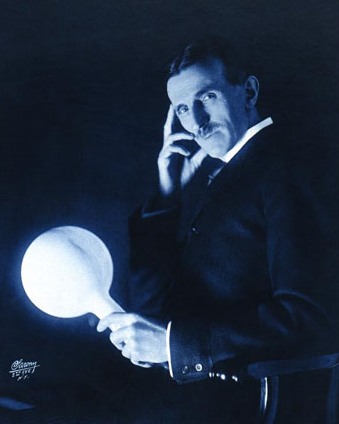From the 2014 archives at ShadowSpinners, here are some of my thoughts on inspiration:

Thomas Edison famously said “Genius is one percent inspiration and ninety-nine percent perspiration.” While the spirit of this quote is most certainly true — it takes a lot of hard work to excel in any endeavor worthwhile — this saying has been used far too often in a manner that downplays the vital importance of inspiration.
Depending on how well Edison did his calculations, he may have exaggerated his point by quite a bit. After all, Nikola Tesla, Edison’s chief rival, not so famously said, “a little theory and calculations would have saved him [Edison] ninety percent of his labor.” You do the math.
In a practical sense, inspiration is not a magical feeling that randomly overwhelms you, or a fairy who whispers in your ear. These things are more usefully cast as motivation, which can be disciplined, and skill, which can be learned. Inspiration, on the other hand, is a thought that gives rise to form. It is the very reason a work comes into being the way it does.
As a writer, it’s important to figure out what your story is really about. What idea, or feeling, or effect do you want to convey to the reader? If you haven’t figured out what you’re trying to do with a story, your chances of succeeding are pretty random. Hence the need to understand your inspiration.
Whether you’re a person who likes to write first and figure out the story while rewriting, or the type who likes to figure out a few things before starting, a conscious examination of what inspired you to conceive of such a story will go a long way toward shaping what you’re trying to write. Inspiration gives focus and vision to the creative process.
A story might be inspired by any number of thoughts, ideas, images, or characters, but the more clearly you understand your inspiration, the greater your chance to realize its full potential. Edgar Allan Poe thought a short tale ought to be inspired by a singular desired effect, preconceived by the author, and that every sentence should work toward building that idea.
Inspiration can be found anywhere, if you look for it. I found the inspiration for this piece in an interview with Horacio Pagani, a designer of hand crafted super high performance cars. His parents were bakers in Argentina, and while he certainly worked hard to create his dream, what struck me most was the specificity with which he described his inspirations, and his passion for turning them into amazing cars.
Many great artists can clearly articulate their inspirations, and this is probably not a coincidence. So yes, there will be perspiration, and I dare say there will be blood, tears, and sacrifices along the way too, but don’t underestimate the importance of inspiration, especially if you aim to create something extraordinary.
*First Published on ShadowSpinners, February 2014.







